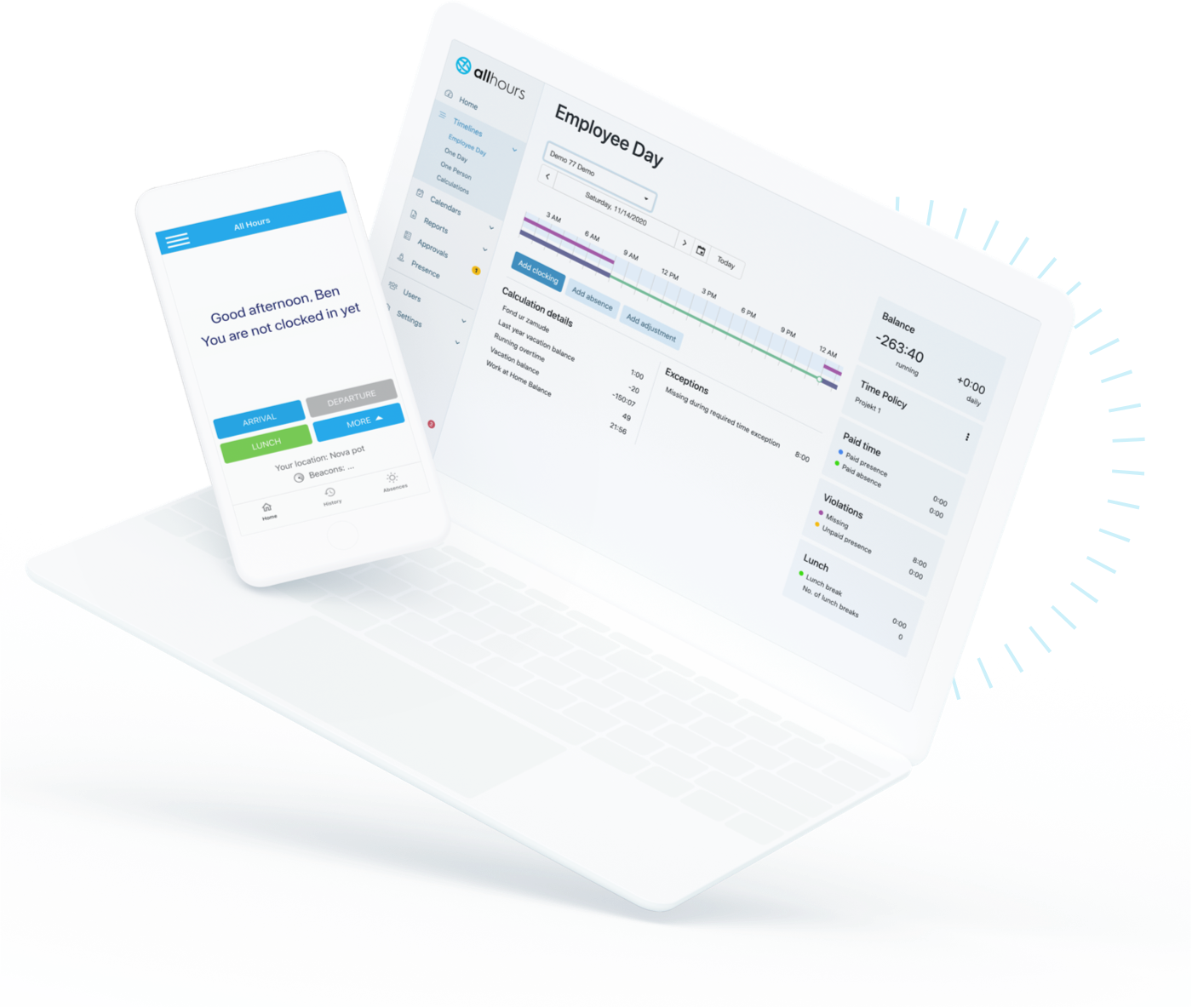The UK Working time directive - Flexible Work and Working Time Records


The UK working time directive defines work conditions, such as the maximum allowed weekly working time, length of night work, health assessments and transfer of night workers to day work, records, daily and weekly rest, breaks during work and more.
Employers should always monitor the hours of workers who appear to be close to the working time limit to make sure they do not do too many hours. UK Working Time Regulations (1998) require employers to take ‘all reasonable steps’ to ensure that the 48-hour limit is complied with. Even since UK left the European Union, the UK government confirmed that there would be no dilution of workers’ rights or any major changes post-Brexit.
The UK working time directive and employee attendance records
Under the UK Working Time Regulations, employers must keep adequate records to show that certain limits are being complied with. These are:
The weekly working time limit – employees should not work more than 48 hours in a week. The weekly limit on working time is based on an average, meaning that employees can work more than 48 hours in a week as long as their average hours don’t exceed 48.
A good way to track the weekly working limit is to use a good attendance management system.
Employers must keep records with the names of all workers (and keep them up to date) who have agreed to work more than 48 hours a week (the ’48 hour opt-out’). They need to be able to demonstrate at any moment that the working time, including overtime (you can use an overtime tracker for that), for workers who have not opted out does not exceed an average of 48 hours for any seven-day period.
An employee can choose to work more than 48 hours a week on average. The concept is called opting out. An employee can opt-out, but must be over 18 years of age, and can’t be treated unfairly for refusing the opt-out. The opt out must be made in writing, and can be indefinite or limited in duration.
The length of nightwork – night workers’ normal hours of work should not exceed an average of eight hours in any 24-hour period.
Nightwork involving ‘special hazards or heavy physical or mental strain’ should strictly not exceed more than eight hours in any 24-hour period.
Young workers’ working time should not exceed eight hours per day, or 40 hours per week.
Also, no young worker should work between 10pm and 6am (or between 11pm and 7am if the contract requires him or her to work after 10pm).
Records must be kept for each worker for two years from the date on which they were made. A failure to keep such records is an offense, for which the penalty in England and Wales is an unlimited fine.
The UK working time directive and remote work
The UK working time directive is one of the friendliest for a modern workplace, since all employees have had the legal right to request flexible work since 2014. This is known as making a statutory application. The good news is that more and more employees, employers, and even some countries like the UK acknowledge all the positive effects of flexible working.
When the working time and/or workplace are flexible, employers are of course still obliged to keep records of employee attendance, despite the fact that they are not always present at the workplace to clock in and out.
Calculating hours for flexible working employees can be easily managed with a clocking app like All Hours, which allows employees to clock in and out anytime from any approved location.
Keep your records online and available at all times. Try the All Hours time and attendance solution for free.







